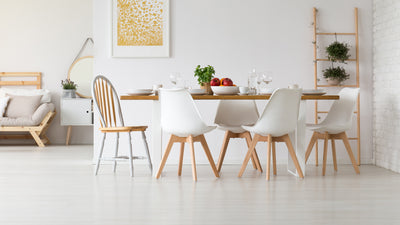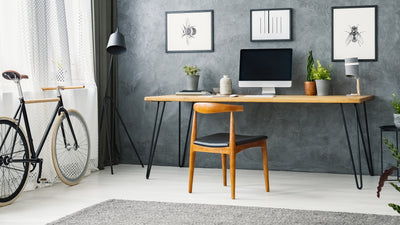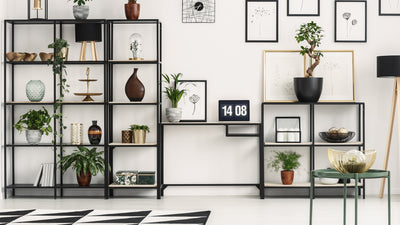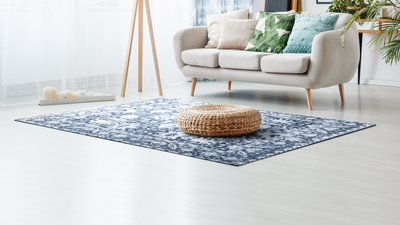The ABCs of Interior Design
When designing your home, one of the biggest hurdles is just being able to describe what you’re looking for. If you’re new to design or just in need of a refresher, Artiss can help you define your style with our handy ABCs of interior design styles.
What style best represents you?
Art Deco:

A response to the despair of World War I, art deco cruised through the Roaring 20s and became one of the most influential design styles of the 20th century. Art deco takes inspiration from the emerging technology of the era and owes its style to movements such as Cubism, Constructivism, Futurism and Art Nouveau. Geometric shapes and bright colours (including traces of black, silver and chrome) make this style bold, bright, and beautiful.
Boho/Bohemian:

What’s the best way to describe boho? The words eclectic, unconventional, artistic and chaotic come to mind. One of the most playful styles, boho blends elements from a variety of cultures and eras, bringing them together in a melting pot of colour and life. Natural wood furnishings are typical, and may your couch be filled with cushions and your shelves be full of knick-knacks from your travels as well as any vintage kitsch you happened to find along the way. Everything in your house should make a statement, and that statement is: I’m alive!
Coastal:

This style is as the name suggests: close to the beach! With this style, you can live your life in a state of permanent rest and relaxation, taking inspiration from the sea and the sand and breaking the boundaries between the great outdoors and the furtive indoors. Everything is light, breezy, and comfortable in your personal oasis. Don’t worry though – having an actual beach nearby is just a bonus.
Contemporary:

A style “of the moment”, contemporary is defined by minimalism, curved lines, neutral colours and deliberate use of texture. Contemporary puts form over function, and although there are some ‘rules’ contemporary will change depending on current trends.
Eclectic:

While at first glance it may seem similar to boho, there’s a key difference between these two styles: where boho has no rules and encourages the use of natural and eco-friendly materials, eclectic design still adheres to some rules of design and is more likely to feature man-made materials like plastic, chrome or steel.
French Provincial:

This aesthetic combines the rustic countryside with the sophisticated Parisian styles of the 17th and 18th century. Reclaimed wood with ornate carvings. Antique mirrors with gold accents. The famous cabriole leg. Warm and welcome yet also intricate and sophisticated, this style will transport you directly to the Southern French countryside.
Hollywood Glamour:
Loud and proud, Hollywood Glamour is a style of timeless indulgence. Like your favourite soap opera, pieces in this style will be dramatic. Animal print, metallics, a chaise lounge perfect for throwing yourself on, your Hollywood Glamour dream home would not be out of place in West Egg.
Industrial:

Taking inspiration from warehouses, factories and other industrial structures, this style is frill and fuss-free. Salvaged and recycled materials sit alongside bare or stripped wood, brick and metal. It’s simple yet still makes a bold statement with its unique mix of classic, natural, and modern.
Mid-century modern:

The 50s are back in style! Mid-century modern taps into both the simple clean lines of modernism and the vibrance and colour we needed in the post-war boom. Mid-century modern is experiencing its own boom as pieces like the Eames Lounge Chair become increasingly sought after, whether they are after a true vintage piece or a convincing replica. Distinguishing features include function over form, juxtaposition of contrasting materials, and a mix of organic and geometric forms.
Minimalist:

Minimalism began as an art movement post World War II and has developed into not just a design style, but a lifestyle. Highly influenced by traditional Japanese design and architecture, minimalism seeks to have only the bare necessities, strip everything to its base elements and achieve ultimate simplicity.
Rustic:

The motto of rustic design could be “make do with what you already have”. It’s rough, it’s casual, it’s down-to-earth. It’s a lot of stone, untreated wood, organic colours, and handmade furniture and decoration. It’s taking off your work overalls after a hard day gardening and putting on your favourite sweatpants with a cup of tea. It’s tough, it’s gruff, but it’s as warm and inviting as a book in front of the fire and being tucked in at night. It’s no wonder holiday goers prefer cabins in the woods to an inner-city hotel – unlike haute-couture city homes, rustic homes are anything but sterile.
Scandinavian:

If you’ve ever looked at anything from the furniture giant Ikea, you will have an idea of what Scandinavian design is. Rooms in Scandinavian style may use white walls to emphasise light and help highlight neutral tones, natural textures like wood and stone, and the occasional pop of colour. This style celebrates the beauty in everyday objects, which lends to its timeless appeal.
Shabby Chic:

If you’re a lover of antiques and up-cycling, then shabby chic is for you. The most prominent element of this style is the use of aged and/or distressed furnishings. It’s a vintage look that combines various eras into a thrifter’s dream. You would be forgiven for confusing the style with boho or French provincial – it’s a little of both, though the real emphasis is on form as a historical artifact and not as an opulent decoration or personally/spiritually significant piece. A shabby chic palette includes white, beige, and pastels for a soft, comfortable, distinctly feminine space.
Traditional:

If contemporary is the design of the moment, traditional is the design of the past. Combining the best of all the eras that came before, these interiors are more welcoming than the name suggests. It takes a lot of cues from old English and French design, is focused on symmetry and classic use of space, and tends to feature darker wood finishes than other styles. A traditional home is familiar, cosy, and family-friendly.
Zen:

Also known as Asian or Japanese Zen, this interior design style emphasises tranquillity, balance, harmony and simplicity in your home. Homes with this design are full of natural materials, large windows and wide-open floors for maximum natural light, and nature-inspired shades. Decoration is minimal and streamlined, and Marie-Kondo-style decluttering is encouraged.
Which of these design styles resonate with you the most?
If you want to learn more about design or dive straight into designing your own interior, visit our website and explore our wide range of furniture in all styles and materials.









